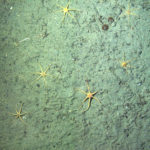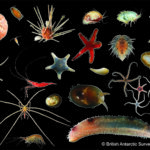Shallow UW Camera System can work to depth up to 1000m, showing a black and white live low resolution video stream and can take colour high resolution stills.
The system consists of a UW tripod which holds the UW housing with the camera and electronics and a stand alone light. The tripod is directly connected to the conductive cable via a chinese finger. The cable is spooled on a small winch on the deck side and via a slip-ring connected to the deck unit. The deck unit is finally connected to a PC which runs a MatLab GUI to display and control the camera functions.
The system consists of a UW tripod which holds the UW housing with the camera and electronics and a stand-alone light. The tripod is directly connected to the conductive cable via a chinese finger. The cable is spooled on a small winch on the deck side and via a slip-ring connected to the deck unit. The deck unit is finally connected to a PC which runs a MatLab GUI to display and control the camera functions.
The underwater video inspection camera is a very light camera, which can be used from a rigid-inflatable boat (RIB) or a larger boats down to 50 m especially for pre SCUBA dive assessments.
The camera system comprises of a webcam in an aluminium housing, powered by an USB connection from a laptop. The laptop shows the live picture, so the scientist can decide on board the RIB if they would to send the SCUBA diver down to, for example, collect certain animals. The camera gives the divers and scientists a simple tool to choose the best dive sites without having to enter the water. This is particularly important in Antarctic waters where dive times are limited and the dive operations are complex due to the remoteness and the cold waters.
1 September, 2016
A new marine biodiversity study in one of the largest Marine Protected Areas in the world reveals the impact of environmental change on subantarctic seabed animals and answers big questions …
On 12 July 2017, the Larsen-C Ice Shelf calved one of the largest iceberg originating from the Antarctic Peninsula ever recorded. As iceberg A68 moves north, it leaves behind an …

